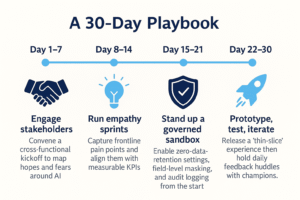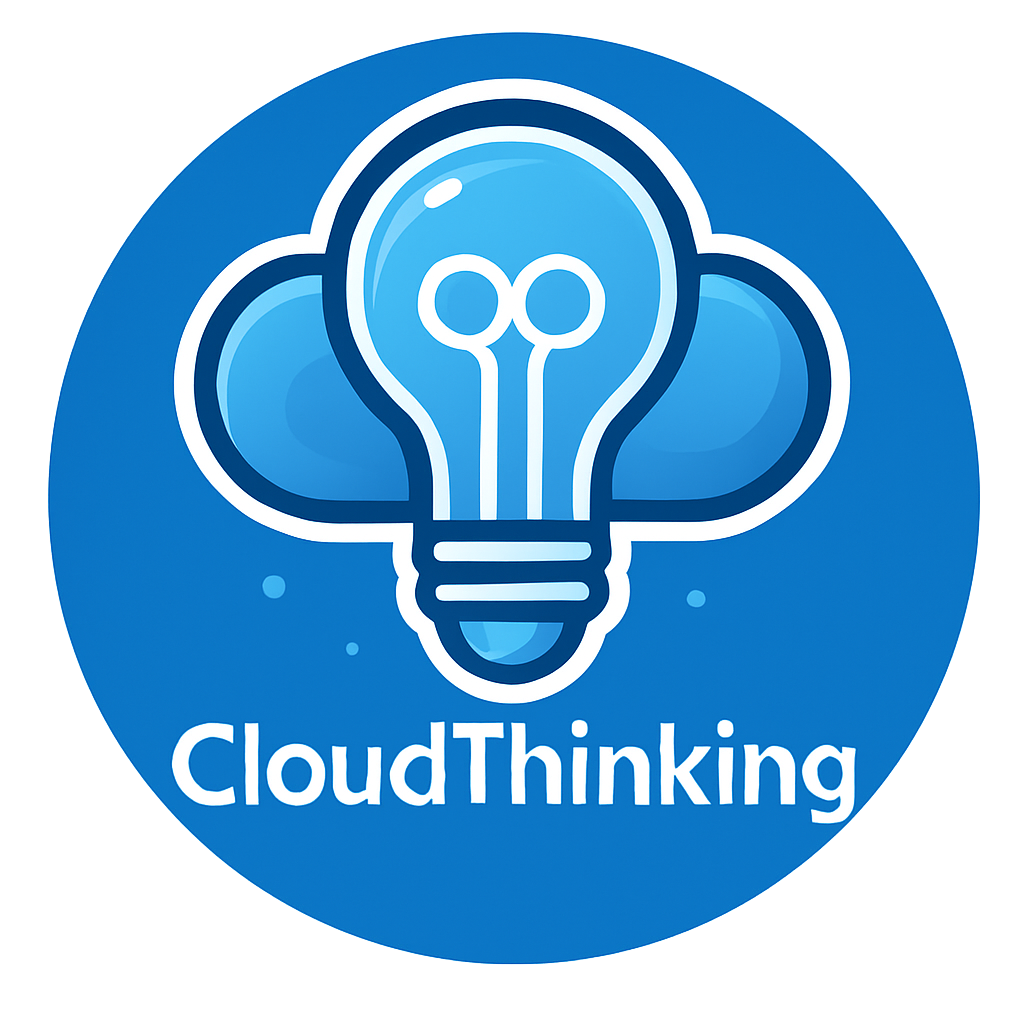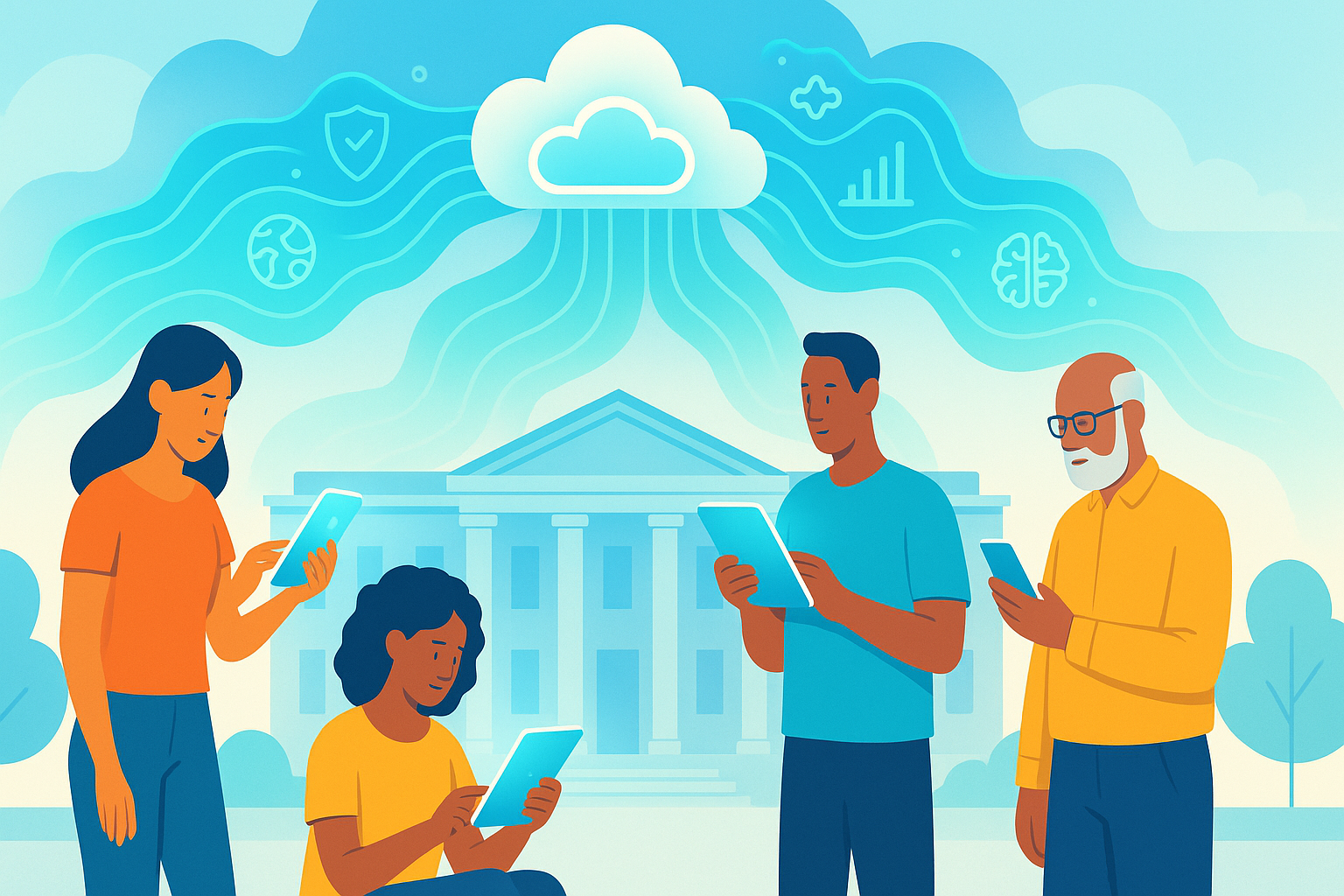Design-Led AI Data Platforms: Putting People First
From Empathy to Insights: Why Human-Centered Design Still Matters
Human-Centered Design (HCD) starts with empathy, observing, listening, and co-creating with the people who will actually use a solution. Those same principles become even more critical when we introduce AI-driven data platforms. If we don’t ground our models in real human needs, we risk automating the wrong thing brilliantly.
“AI succeeds when it amplifies; never replaces, the human heartbeat of your organization.”
The Data Platform Layer: Turning Empathy into Action
Cloud-native data platforms (think Salesforce Data Cloud, Azure Synapse, Snowflake) give teams the horsepower to translate HCD insights into living systems. By unifying customer, operational, and sensor data, an AI model can adjust in real time, yet remain traceable through built-in governance such as Salesforce’s Trust Layer or Azure Purview.
But tighter data pipelines alone don’t guarantee better experiences. You still need:
| HCD Stage | Data-Platform Enabler | Outcome |
| Empathize | Unified data graph | Holistic view of user context |
| Define | Semantic layer & metadata | Clear problem statements anchored in facts |
| Ideate / Prototype | Low-code AI workbenches | Rapid experiments without writing 1,000 lines of code |
| Test & Iterate | Real-time feedback loops | Continuous learning and bias monitoring |
Three Principles for Marrying HCD with AI Platforms
- Start with “small data” storytelling. Conduct ride-alongs, interviews, or journey maps first; then map qualitative insights to your data warehouse.
- Design for explainability, not just accuracy. Embed prompts, decision logs, and human-override dashboards so frontline teams can question the model’s reasoning.
- Empower in-house champions. Identify curious early adopters who will host “AI office hours,” gather feedback, and translate model outcomes into everyday language.
“Great data doesn’t create great experiences, great questions do.”
Mini-Case: The Empowered Claims Team
A regional public-sector benefits agency blended HCD workshops with a governed AI layer:
- Empathize – Researchers shadowed claim processors to uncover a frustrating 7-screen toggle.
- Define – “Reduce time-to-decision by 25 % without increasing error rates.”
- Ideate – Using a low-code Copilot Studio bot, the team prototyped a single conversational surface that fetched all related case data.
- Test – In a two-week pilot, average handling time fell by 32 %. More important, staff reported higher confidence because they could inspect source documents inline.
The result: faster outcomes for veterans, happier employees, and a transparent audit trail for regulators, proof that people-centric AI beats “AI for AI’s sake.”
Getting Started: A 30-Day Playbook

The Bottom Line
When Human-Centered Design meets AI-driven data platforms, we don’t just crunch numbers, we uncover stories, surface empathy at scale, and build systems that adapt as quickly as people’s needs evolve. The future isn’t man or machine; it’s man + machine, united by thoughtful design.
Ready to co-create? Let’s talk → cloudthinking.net/contact-us/




